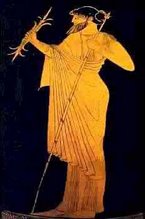
I must give credit for the following article to “Cais Archaeological & Cultural News”.. In the process of reading about ancient metal money I encountered the following article and I believe it is of interest to many of our members. The article did not provide an author’s name so I am presenting the article as I found it.
It is widely believed that Lydians were the first nation to ever mint a coin for financial transactions; however, an Iranian scholar has just refuted the theory.
It is widely believed that Lydians were the first nation to ever mint a coin for financial transactions; however, an Iranian scholar has just refuted the theory.
According to existent documents, it is impossible to confirm if Lydians minted coins for the very first time, and we just can say first coins were produced in a land stretched from ancient Persia to Greece, contended Dr. Naser Chegini, head of the history department at the archaeological research center of Iranian Cultural Heritage and Tourism Organization (CHTO).
He believes human beings initially used leaves, stone insignias and shells to conduct their transactions. “But they were not viable and soon people decided to make coins. I reckon it happened during the 6th and 7th centuries BC, but there is no verifiable proof that Lydians invented coins.”
‘The Lydians,’ says Herodotus (i. 94), ‘were the first people we know of to strike coins of gold and of silver’, and Xenophanes of Colophon bears witness to the same tradition. Passing from these statements of ancient writers to an examination of the earliest Asiatic essays in the craft of coining, we are led to ascribe to the seventh century B.C., and probably to the reign of Gyges (B.C. 687- 652), the founder of the dynasty of the Mermnadae and of the new Lydian empire, as distinguished from the Lydia of more remote antiquity, the first issues of the Lydian mint.
These are bean-shaped ingots of the metal called by the Greeks ‘electrum’ or ‘white gold’, a natural compound of gold and silver, collected at Sardes from the washings of the little mountain torrent Pactolus, and perhaps from diggings on the slopes of Tmolus and Sipylus. Ingots and rings, &c., of the precious metals adjusted to fixed weights had been used for purposes of exchange for ages before the Lydians first invented the convenient process of stamping them with marks as guarantees of value. Ingots thus stamped henceforth passed freely as current coin, and, so long as they were correct in weight, the exact amount of pure gold in each lump of metal does not appear to have been taken into consideration.
The generally accepted rate of exchange between pure gold and silver stood in these times as 13.3 to 1, and the mixed metal, ‘electrum,’ of very variable quality, was roughly estimated at the rate of about 10 to 1, a convenient proportion which enabled bankers and money-changers to make use of a single set of weights for electrum and silver, and which accounts for the fact that the weights of the electrum staters correspond with those of the later silver staters, and depend upon the standard which happened to be in use for weighing silver in bullion and afterwards in coin in various districts. These standards were, in Lydia, the so-called Babylonic (stater 168 grs.) and the so-called Phoenician (stater 220 grs.).
One of the most fascinating coins of all time, a coin that has more reason than any other to be called the first true coin, is the Lydian third stater, or trite, pictured above. This coin was minted around 600 B.C. in Lydia, Asia Minor (current-day Turkey), a country in close proximity to both the Greek colonies in Asia Minor, through which ideas about coinage and much else spread, and the civilizations of Mesopotamia, from which ideas about money and much else originated.
Thank you for reading and I would love to have you share your opinions about the article.. God Bless.. Jerry..
